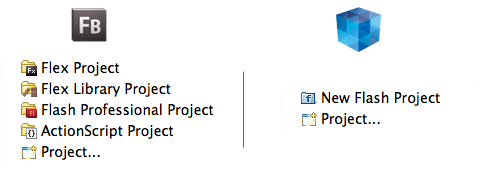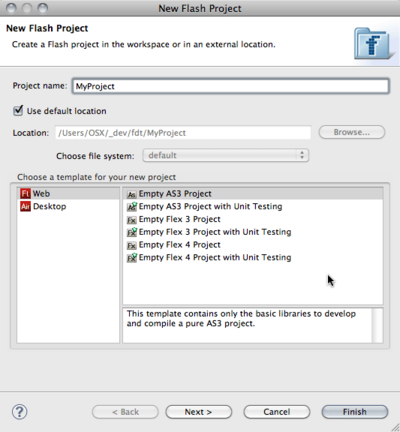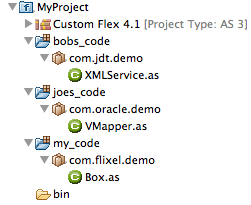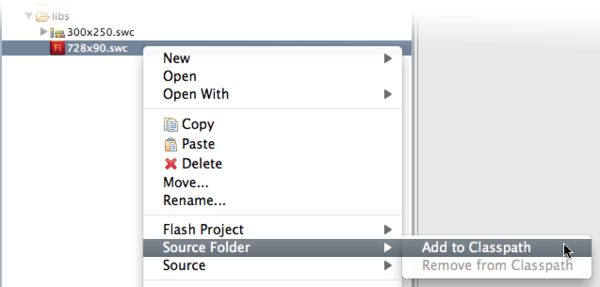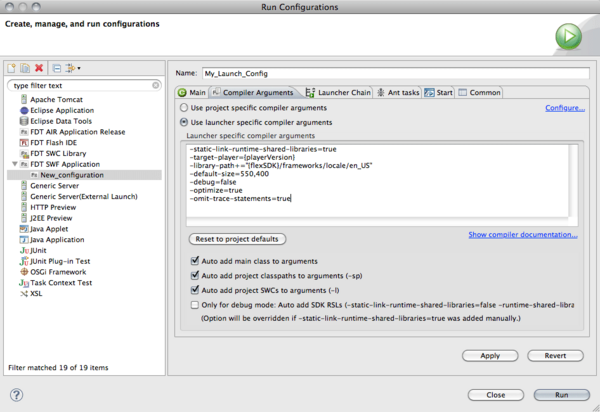From Flash Builder To FDT
From FDT Documentation
If the differences between FDT and Flash Builder were boiled down into one word, the word would be flexibility. Besides having powerful code editing features that are missing with Flash Builder, FDT is flexible with your project management whereas Flash Builder is going to harness you with constraints. While, at first, these concepts will seem foreign to the long term Flash Builder user - as you master them you'll quickly understand the power and flexibility they provide.
- note This article will cover some of the FAQs that users have when migrating from Flash Builder to FDT. It's not meant to be a feature comparison. For example, Flash Builder does not support haXe so haXe development will not be covered here.
Contents |
Video
Overview Of Differences
Learn more about these topics with our tutorials found on the Main Page.
- FDT has hot-swappable project types. During a project, a developer can change the project from AIR, to Flex to AS3 and even custom project types.
- Project Templates. FDT allows for user defined project structures and dependancies.
- FDT projects are launched via the Launcher. FDT uses configurable launchers to build and run your projects. One project can have multiple launch configurations and each can be saved for later use and shared between other FDT users.
Project Structure
Where Did All My Projects Go? or Everything is a Flash Project!
Perhaps the most significant difference between FDT and Flash Builder has to do with the Project Wizard.
When creating a new project, Flash Builder has several different Project Wizards:
- Flex Project
- Flex Library Project
- Flash Professional Project
- ActionScript Project
After choosing one, Flash Builder provides you with project creation process depending on the type of project chosen. When finished, Flash Builder will have setup a directory structure and creates files whose initial structure cannot be changed. A good example of this is the existence of the libs folder between a Flex Project and the omission of a libs folder for an ActionScript Project.
Conversely, FDT takes a different approach. Everything, after all, is a Flash Project - the differences lie in what SDK you're going to be using and you're output. With this in mind, FDT instead allows developers to define their own Project Types via the New Flash Project Wizard.
FDT ships with a few different project templates, but developers can create their own as they please. You're able to preset your:
- SDK (what is included and what isn't).
- Your directory structure.
- You're source folder(s)
- Library dependencies
- Files
- and much more....
If you're new to FDT, haven't yet had the chance to explore project templates and need to decide what type of project to choose - think about the type of SDK you're going to need for your output. If you need to use any Flex components use a template that is Flex based, otherwise, stick with AS3 projects.
Where's My Source Folder? Anywhere Your Want!
Perhaps one of the most obvious difference between Flash Builder and FDT has to do with how easily it is to have multiple source folders.
There's really no limit to how many source folders you can have. When compiling and edting, FDT will look to all of your 'source folders' for code. These folders can be easily turned off and on - simply right click on the folder and choose Source Folder>Remove From Class Path / Add to Class Path.
What the SWC?
Similar to how easily it is to add and remove source folders, adding and removing .SWCs is also simple. With Flash Builder, when a developer creates a Flex project, she has a libs folder where she can drop .SWCs into and they will be automatically added to the source path for the project. This is convenient; however, when working with an ActionScript Project you'll need to manually create a libs folder and then navigate to your project settings to add that folder to your project.
Adding a SWC to a Project
With FDT the process of adding .SWCs to your project is much more straight forward. If your .SWC isn't already added to your class path when your project is created, you can simply add it to your project as if you were adding and removing a source folder. Simply right click on your .SWC and choose Source Folder>Add to Classpath / Remove from Classpath.
Compiling and Running
Wait...? How Do I Launch My Project?
With FDT, you'll need to create a launch configuration and use that to launch your projects. For more information, check out the Launch Configuration Tutorial.
Where's my html-template and other support files?
FDT provides developers with a base and powerful tools to build upon. As such, FDT leaves it up to the developers to decide for themselves how to embed, launch and test their applications. While Flash Builder's HTML wrapper is sufficient for some developers, others will find that it gets in the way. They then need to go back and undo Flash Builder's default project settings to get their project where they want it to be.
This is where FDT's project templates come in. If a developer wants to test their applications embedded within a PHP application - create a template for it, if a developer prefers to use swfin instead of swfobject - create a template for it, if developers wants to use Flash Builder's HTML-wrapper - create a template for it.
How Do I Export A Release Build?
The Flex compiler gives developers an option to include debugging code in their applications. This is of course handy for testing and developing, but its not necessary when deploying your applications. This is why Flash Builder has the option to export a release build.
For time being, FDT has no specific Export Release Build action. The best thing to do to is build the .SWF via "Run" and to add a few compiler options such as:
-optimize=true -omit-trace-statements=true
When a FDT application is launched via "Run", FDT internally adjusts the debug option to false. There's no need to explicitly set it your self.
Check out more in the Launch Configuration Tutorial.
Wrap Up
It's important to the Powerflasher team that users who move from Flash Builder to FDT have all their questions answered and are made aware of the power and potential of FDT. If something's missing, let us know!


